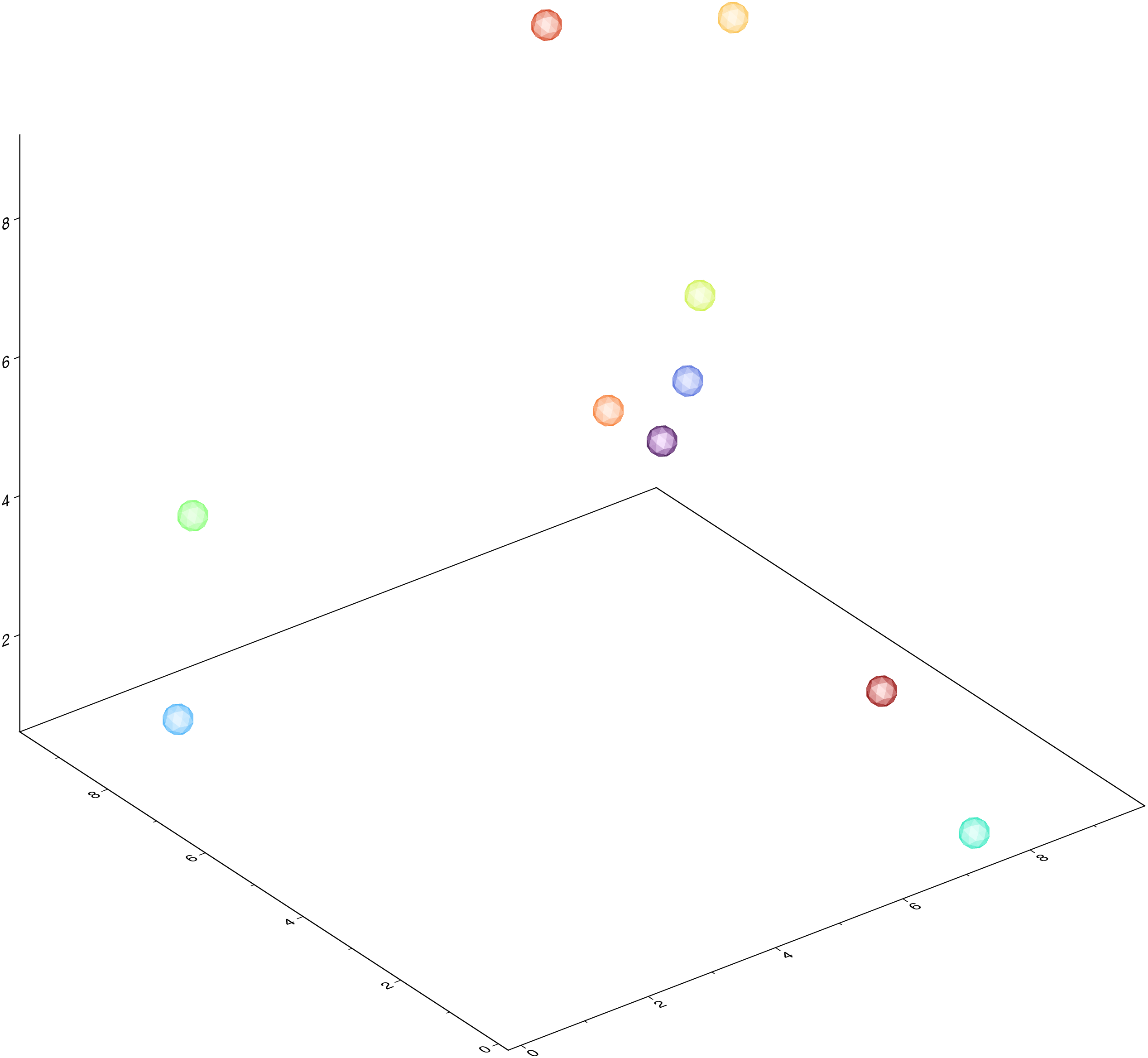replicant
D = replicant(FV, kwargs...)::Vector{GMTdataset}Take a Faces-Vertices dataset describing a 3D body and replicate it N number of times with the option of assigning different colors and scales to each copy. The end result is a single Vector{GMTdataset} with the replicated body.
Args
FV: A Faces-Vertices dataset describing a 3D body.
Kwargs
replicate: A NamedTuple with one or more of the following fields:centers, a Mx3 Matrix with the centers of the copies;zcolor, a vector of lengthsize(centers, 1), specifying a variable that will be used together with thecmapoption to assign a color of each copy (default is the1:size(centers, 1));cmap, a GMTcpt object;scales, a scalar or a vector ofsize(centers, 1), specifying the scale factor of each copy.replicate: A Mx3 Matrix with the centers of the each copy.replicate: A Tuple with a Matrix and a scalar or a vector. The first element is the centers Mx3 matrix and the second is the scale factor (or vector of factors).scales: Scale the copies by this factor, or vector of scales (same length as number of copies)view or perspective: Set the view angle for the replication. The default is217.5/30. Surface elements that are not visible from this persective are eliminated.
Returns
A Vector{GMTdataset} with the replicated body. Normally, a triangulated surface.
Example
using GMT
FV = sphere();
D = replicant(FV, replicate=(centers=rand(10,3), scales=0.1));
# or, to plot them
viz(FV, replicate=(centers=rand(10,3)*10, scales=0.2))See Also
extrude, flatfv, fv2fv, grid2tri, revolve, surf2fv
These docs were autogenerated using GMT: v1.29.0
